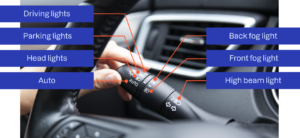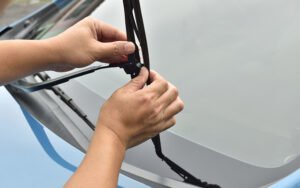Introduction
Regular car maintenance is crucial for keeping your vehicle in top condition, ensuring safety, and avoiding costly repairs. One of the simplest yet essential tasks is checking and topping off vehicle fluids, including coolant, brake fluid, and power steering fluid. Learning to perform these checks yourself can save money, extend your vehicle’s lifespan, and improve overall performance.
Many car owners rely solely on mechanics for basic fluid maintenance, but with a little knowledge and effort, you can easily perform these tasks yourself. This guide will walk you through the process step by step, ensuring you feel confident handling these basic maintenance tasks and answering common questions along the way.
Why Checking and Topping Off Fluids is Important
1. Prevents Overheating and Engine Damage (Coolant)
Coolant (also known as antifreeze) plays a crucial role in regulating your engine’s temperature. Without the right amount, your engine can overheat, leading to severe damage, including cracked engine blocks or blown head gaskets.
FAQ:
- How often should I check my coolant?
- Check your coolant level at least once a month and before long trips.
- Can I use water instead of coolant?
- While water can be a temporary fix, it doesn’t provide the necessary protection against freezing or overheating. Always use the recommended coolant type.
2. Ensures Responsive Braking and Safety (Brake Fluid)
Brake fluid enables your braking system to function properly. Without it, your brakes may feel spongy or even fail, which can be extremely dangerous.
FAQ:
- What happens if I drive with low brake fluid?
- Low brake fluid can lead to poor braking performance or complete brake failure.
- How do I know if my brake fluid is bad?
- Check for a dark or dirty appearance; clean brake fluid is usually light yellow or clear.
3. Maintains Smooth Steering and Control (Power Steering Fluid)
Power steering fluid helps you steer effortlessly. Low fluid levels can make turning the steering wheel difficult, increasing strain on your arms and the vehicle’s steering components.
FAQ:
- What are the signs of low power steering fluid?
- Difficulty turning the wheel, whining noises, and vibrations while steering.
- Can I mix different types of power steering fluid?
- No, always use the recommended type to avoid damaging the system.
Tools and Materials Needed
- Vehicle owner’s manual (to locate reservoirs and find the correct fluid types)
- Clean cloth or paper towels (to wipe dipsticks and spills)
- Funnel (to pour fluids without spillage)
- Coolant (ensure you use the correct type for your vehicle)
- Brake fluid (always match the DOT rating specified in the manual)
- Power steering fluid (use only what’s recommended by the manufacturer)
- Safety gloves (to protect your hands from chemicals)
- Safety goggles (to shield your eyes from splashes)
Step-by-Step Guide
1. Checking and Topping Off Coolant
Step 1: Ensure Safety
- Always check coolant when the engine is cold to avoid burns from pressurized steam or hot fluid.
- Wear safety gloves and goggles for protection from chemicals.
Step 2: Locate the Coolant Reservoir
- The coolant reservoir is usually a translucent plastic tank with min/max markings.
- The location varies by vehicle, so check your owner’s manual.
Step 3: Check the Coolant Level
- Observe the level through the tank’s markings without opening the cap.
- If below the minimum mark, it needs topping off.
Step 4: Add Coolant
- Use a funnel to pour coolant into the reservoir slowly.
- Never overfill; leave room for expansion.
- Securely close the cap and check for leaks.
2. Checking and Topping Off Brake Fluid
Step 1: Ensure Safety
- Brake fluid is corrosive and can damage car paint and skin, so avoid direct contact.
- Always use gloves and wipe any spills immediately.
Step 2: Locate the Brake Fluid Reservoir
- Found near the back of the engine bay, typically labeled “Brake Fluid.”
- Refer to the manual if needed.
Step 3: Check the Fluid Level
- The reservoir has minimum and maximum markings.
- If fluid is low, it may indicate worn brake pads or a leak.
Step 4: Add Brake Fluid
- Use the correct DOT-rated brake fluid (found in the manual).
- Slowly pour fluid using a funnel and avoid overfilling.
- Ensure the cap is tightly closed to prevent contamination.
3. Checking and Topping Off Power Steering Fluid
Step 1: Locate the Power Steering Reservoir
- Typically found on or near the engine, often with a steering wheel symbol.
- Some newer cars have electronic steering and do not require fluid.
Step 2: Check the Fluid Level
- The reservoir is translucent with markings.
- If low, the steering may feel stiff or noisy.
Step 3: Add Power Steering Fluid
- Use the correct type as specified in your manual.
- Pour fluid slowly to avoid overfilling, which can cause leaks.
Safety Tips
- Always check fluids on a level surface for accurate readings.
- Avoid mixing different types of fluids, as this can cause damage.
- Use clean tools and containers to prevent contamination.
- If fluid levels drop frequently, consult a mechanic to check for leaks.
Signs You Need Professional Help
- Frequent low coolant levels may indicate a leak or head gasket issue.
- Dark, dirty brake fluid suggests it’s time for a flush.
- If power steering fluid is low and you hear a whining noise, it may indicate a pump problem.
Common Mistakes and How to Avoid Them
- Checking coolant when the engine is hot → Always wait for it to cool down.
- Overfilling brake or power steering fluid → Follow the recommended levels to prevent system damage.
- Using the wrong type of fluid → Always refer to your owner’s manual.
- Ignoring leaks → Address them early before they cause major repairs.
Bonus Tips for Efficiency and Cost Savings
- Buy fluids in bulk to save money.
- Use a turkey baster to remove excess fluid if overfilled.
- Keep a maintenance log to track fluid levels and changes.
- Consider synthetic fluids for longer-lasting performance.
Conclusion
By regularly checking and topping off your vehicle’s essential fluids, you can prevent costly repairs, improve safety, and keep your car running smoothly. Performing these simple tasks can save you time and money while increasing your confidence in DIY car maintenance.
Make it a habit to check your fluids monthly, and if you notice any unusual changes, don’t hesitate to seek professional help. If you found this guide helpful, consider exploring other DIY car maintenance tasks to enhance your knowledge and vehicle care skills.




